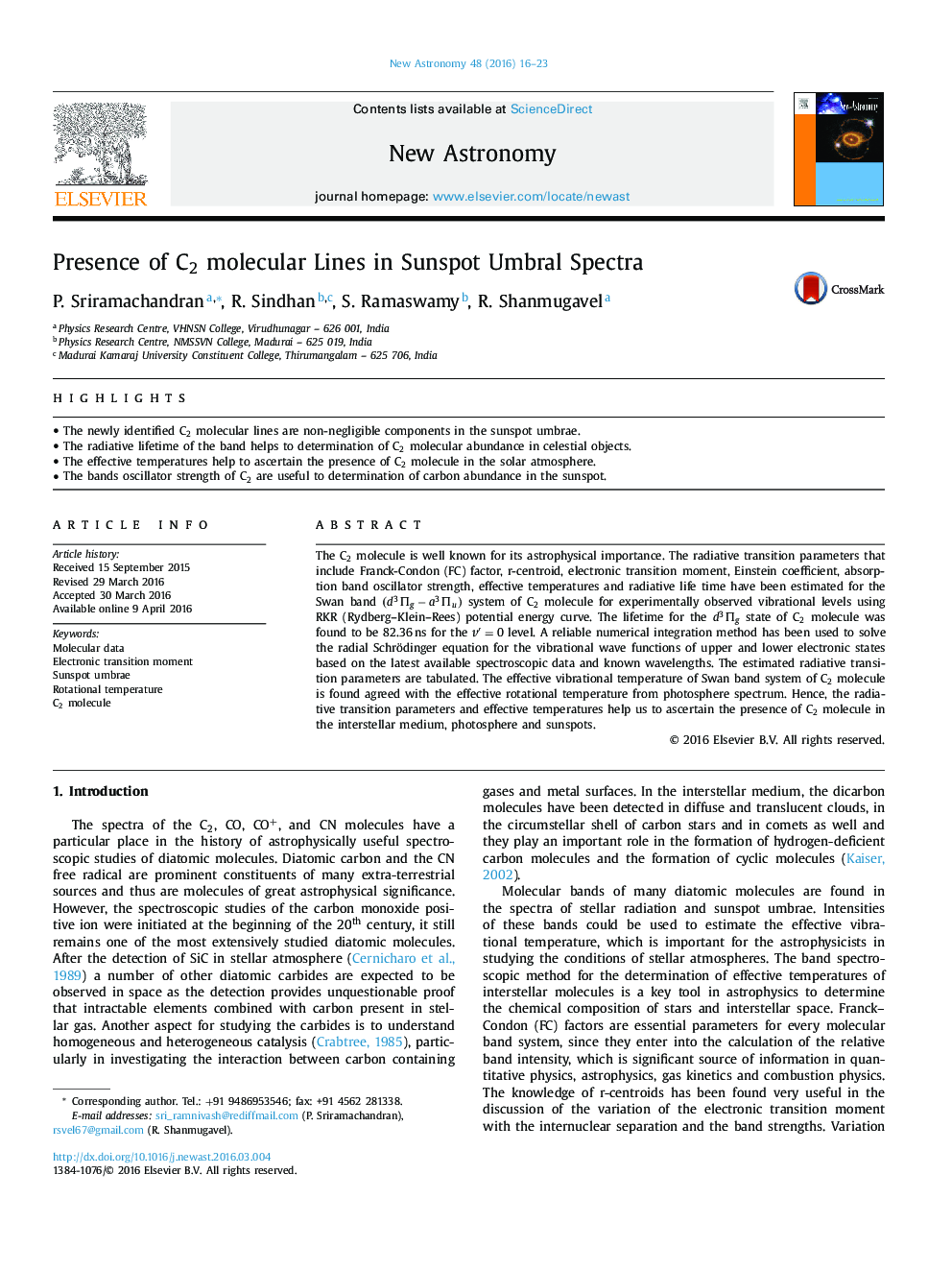| Article ID | Journal | Published Year | Pages | File Type |
|---|---|---|---|---|
| 1778707 | New Astronomy | 2016 | 8 Pages |
•The newly identified C2 molecular lines are non-negligible components in the sunspot umbrae.•The radiative lifetime of the band helps to determination of C2 molecular abundance in celestial objects.•The effective temperatures help to ascertain the presence of C2 molecule in the solar atmosphere.•The bands oscillator strength of C2 are useful to determination of carbon abundance in the sunspot.
The C2 molecule is well known for its astrophysical importance. The radiative transition parameters that include Franck-Condon (FC) factor, r-centroid, electronic transition moment, Einstein coefficient, absorption band oscillator strength, effective temperatures and radiative life time have been estimated for the Swan band (d3Πg−a3Πu)(d3Πg−a3Πu) system of C2 molecule for experimentally observed vibrational levels using RKR (Rydberg–Klein–Rees) potential energy curve. The lifetime for the d3Πg state of C2 molecule was found to be 82.36 ns for the v′=0v′=0 level. A reliable numerical integration method has been used to solve the radial Schrödinger equation for the vibrational wave functions of upper and lower electronic states based on the latest available spectroscopic data and known wavelengths. The estimated radiative transition parameters are tabulated. The effective vibrational temperature of Swan band system of C2 molecule is found agreed with the effective rotational temperature from photosphere spectrum. Hence, the radiative transition parameters and effective temperatures help us to ascertain the presence of C2 molecule in the interstellar medium, photosphere and sunspots.
